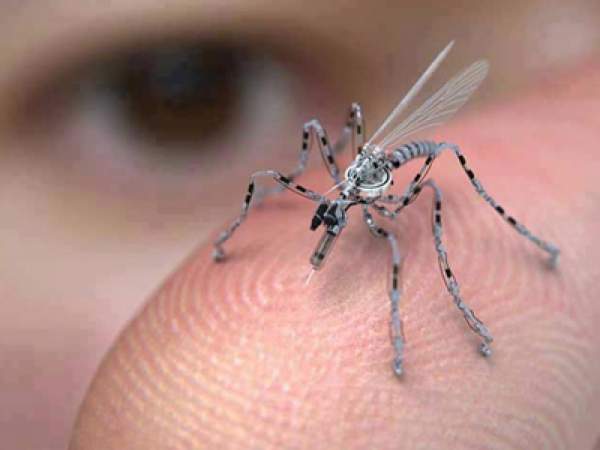 Religion
Religion  Religion
Religion  Weird Stuff
Weird Stuff 10 Horrifying Final Destination-Like Accidents
 Movies and TV
Movies and TV 10 Music Biopics That Actually Got It Right
 History
History 10 Momentous Events That Also Occurred on July 4th
 Animals
Animals 10 Times Desperate Animals Asked People for Help… and Got It
 Movies and TV
Movies and TV 10 Movie Flops That Found Their Way to Cult Classic Status
 History
History 10 Things You Never Knew About Presidential First Ladies
 Movies and TV
Movies and TV 10 Zombie Movies That Will Actually Terrify You
 Humans
Humans 10 Times Scientists Were Absolutely Sure… and Absolutely Wrong
 Our World
Our World 10 Pivotal Moments for Life on Earth
 Religion
Religion 10 Innovations and Discoveries Made by Monks
 Weird Stuff
Weird Stuff 10 Horrifying Final Destination-Like Accidents
 Movies and TV
Movies and TV 10 Music Biopics That Actually Got It Right
Who's Behind Listverse?

Jamie Frater
Head Editor
Jamie founded Listverse due to an insatiable desire to share fascinating, obscure, and bizarre facts. He has been a guest speaker on numerous national radio and television stations and is a five time published author.
More About Us History
History 10 Momentous Events That Also Occurred on July 4th
 Animals
Animals 10 Times Desperate Animals Asked People for Help… and Got It
 Movies and TV
Movies and TV 10 Movie Flops That Found Their Way to Cult Classic Status
 History
History 10 Things You Never Knew About Presidential First Ladies
 Movies and TV
Movies and TV 10 Zombie Movies That Will Actually Terrify You
 Humans
Humans 10 Times Scientists Were Absolutely Sure… and Absolutely Wrong
 Our World
Our World 10 Pivotal Moments for Life on Earth
10 Mind-blowing Sci-Fi Technologies That Really Exist
Science fiction is one of the oldest genres in literature, with its roots tracing all the way back to the days of mythology. Sci-fi can be fanciful, extreme, even downright insane, but what separates it from fantasy is that it commonly relies on technology which, in at least some respects, could actually be feasible.
That’s not to say that you’ll be drafted for the next lightsaber battle on Mars anytime soon – but if there’s one thing we’ve learned from history, it’s that “real” science often does take its ideas straight from the pages of sci-fi. For example…

The 2002 film Minority Report was futuristic sci-fi at its sleekest. One of the major technological components was the automatic car: set it on autopilot, and it seamlessly moves along with traffic. We saw it again in I, Robot, and this is one real world technology that we’ve been waiting for for a long time.
The Google Driverless Car was the first real-world attempt that gained widespread public recognition, even after those videos of it running over traffic cones. Google claims that its small fleet has now driven more than 300,000 miles unassisted by human control, and usually has at least 12 cars out on the road at all times.
Not to be left behind, Volvo has recently tested its own “platooning technology” in which a string of driverless vehicles follows behind a lead car, stopping, turning, and accelerating in unison. In essence, they’re being electronically towed by the lead car, allowing the driver to “spend their time doing other things while driving”, which is something everybody does anyway.
We don’t remember this being in any sci-fi movies – but dang it, it totally should have been. The device is a mobile airbag which will supposedly replace all those unstylish bicycle helmets. It’s contained in a scarf which is worn around your neck, and at the moment of impact it inflates and forms a protective cushion around your head.
The Invisible Bike Helmet was created by Hovding, a Swedish technology company. Above is a video of the airbag helmet in action.

The Batman franchise is rarely viewed as science fiction, but on closer inspection, that’s exactly what it is. The gadgets, the vehicles, the supervillains – all the elements point towards the sci-fi genre. The 1966 film Batman introduced us to one of the greatest gadgets of all time: Shark repellent. In the movie, Batman, upon being attacked by a shark, reaches into his utility belt for a can of spray shark repellent. It was awesome, but not something anybody ever expected to see in real life. Until now, that is.
Chemist Eric Stroud has developed a device that effectively repels sharks and sends them swimming in the other direction. It’s based on magnetism (unfortunately, there are no spray cans involved), which overwhelm the sensors known as ampullae of Lorenzini that sharks use to hunt and feed. Biologists think that sharks use the magnetic field of the Earth to navigate, and a spinning magnet overloads those sensors, effectively shooing the shark towards calmer waters.
In the future this magnetic shark repellent could be used to keep sharks out of fishing nets, or to “fence” off swimming areas. And yes, Stroud is also working on a few chemical shark repellents. Fingers crossed that they’ll go into an aerosol can.

In the 2002 movie The Time Machine, Alexander Hartdegen (played by Guy Pierce) creates a time machine and accidentally propels himself to the year 802,701 AD. While there (then?), he discovers the ruins of a building that contain a hologram from 800,000 years ago, and thousands of moviegoers collectively rolled their eyes at the idea that any type of data storage could last that long.
Or can it? The Japanese company Hitachi has recently developed a data storage medium that can hold onto data – wait for it – forever. The square quartz glass sliver is a mere .08 inches thick and just .8 inches to a side. The chip stores binary data – up to 40Mb worth – in the form of tiny dots that can be read by a device as simple as a microscope – or any machine that understands binary, which is every machine.
Furthermore, quartz glass is waterproof, chemical and radio wave resistant, and is able to last for two hours at 1,832 degrees Fahrenheit. In other words, it’s like the Terminator of data storage compared to harddrives, compact disks, books – literally every other storage device we currently have. It’s extremely close to indestructible, meaning that it can withstand even the disasters that will eventually destroy the building it was made in. And hey, speaking of Terminators…
Androids are a staple in sci-fi, and although we’ve been able to create some incredibly intricate robots, the mechanics of creating a creature that’s able to walk upright on two feet are just downright difficult. Not only is balance an issue, but for the robot to be practical it has to have the ability to avoid obstacles, navigate on its own, traverse difficult terrain – everything that we as humans take for granted, but which present enormous challenges at even the most basic processing level in robotics. It’s the age old question: Do I walk around the kitten, or trip over it?
Well according to DARPA, the answer is probably “DESTROY ON SIGHT.” Check out their Pet-Proto robot. If this video doesn’t cause you to scream and run in terror, you might be legally dead (in which case, check out this website).
For those of you who can’t watch the video above, it’s a testing exercise on a walking robot capable of autonomous decision making. And not only can it walk over obstacles – it has reflexes. There is a point in the beginning of the video where it steps up onto a bench, loses its balance, and actually reaches out and steadies itself with its robot arms.
And relatively speaking, that’s old news. DARPA’s upcoming Robotics Challenge will allow contestants to pit their own androids against similar obstacles. The goal of the challenge is to create robots that will be able to enter dangerous areas and utilize human tools and vehicles.

What’s more terrifying than a human shaped robot? How about nanodrones – flying drones as small as mosquitoes that can take pictures, record audio, and take DNA samples from you without your knowledge.
Unmanned aerial vehicles (UAVs) – and the government’s use of them – have been attracting widespread public attention for several years now. You’ve probably seen stories about the Predator drones on the news.
Evidence for MAVs (micro aerial vehicles), on the other hand, hasn’t been provided quite so publicly, although some people claim that the government has been using them as domestic surveillance tools for years. It’s not as farfetched as it might sound: An MAV with a wingspan of only 3cm was unveiled at the 2007 International Conference on Intelligent Robots and Systems, and eyewitness reports of dragonfly-shaped MAVs came in from an antiwar rally that same year.
An image of a mosquito drone with the ability to inject viruses through skin has been circulating for a while, but the existence of that specific drone is still unverified.

Science fiction authors have been fascinated with the human mind for centuries. As much as we know about the human body, the mind is still largely unmapped territory. In the medical world, comatose patients have always been a subject of intensive study. What are their minds doing? Do they dream? Can they hear you talk?
According to Professor Adrian Owen of the Brain and mind Institute, they can not only hear you – they can talk back.
Meet Scott Rouley, a 39 year old man who was involved in a car accident that left him in a coma for more than 12 years. Through the use of fMRI, a brainwave imaging technology, he has been able to respond to questions by forming thoughts that lit up specific areas of his brain.
This result was first achieved in 2010 by Professor Owen, in a study where comatose patients were asked to imagine themselves playing tennis, which caused activity in one part of the brain, and walking around their home, which caused activity in a different part of the brain. One of these activities represented “Yes” and the other stood for “No.” When asked questions, 5 out of the 54 patients were able to respond correctly. Remember, these are people in a coma with absolutely no motor function. They’re not writing books yet, but it can’t be far off.

Transplanting a human brain into a robot: it doesn’t just sound like science fiction; it sounds like bad science fiction. But that’s what Russian Dmitry Itskov claims to be working towards. Granted, this isn’t a technology that is currently available, but Itskov plans to have it running in the next 10 years – well before all those billionaire baby boomers punch their final ticket.
The process would upload the person’s consciousness like a computer program into the robot’s mechanical “brain.” The project, creatively dubbed “Avatar”, envisions lifelike humanoid robots by 2015 and full consciousness transplants by 2020.
DARPA is taking a similar approach to thought transference by setting aside $7 million to a project (yes, also named Avatar. Sigh…) that would allow soldiers to remotely operate robots on the battlefield through mind control.

Nothing is more terrifying than a supervirus with the potential to wipe out billions of people, but fortunately that’s the kind of stuff left to James Bond villains and shadowy corporations in movies. Or at least it was, until Ron Fouchier, a Dutch virologist, announced that he had created that exact virus in 2011.
The virus is a genetically altered version of the H5N1 virus, otherwise known as the avian virus, which is deadly among birds but has only accounted for around 500 human infections since 2002 (for comparison, the regular flu kills about 3,000 people per year).
With a few minor tweaks to the virus, Fouchier and his team made it simultaneously more deadly and much, much more contagious, to the point where it killed approximately 50% of the ferrets used for testing. Ferrets are commonly used to test viruses because their bodies behave much like humans.
In the tests, the virus was first transmitted between the ferrets manually, but after 10 generations it became airborne, and easily reached the entire population. And remember, this is a working model for how it would affect humans. Just imagine if that was released to bioterrorists. Oh wait, people already have – This has become one of the biggest controversies in the virology community, since Fouchier wanted to publish his entire method to the public.

Out of all the science fiction premises, the most frightening has got to be the government that can spy on everybody all the time. Cameras at every street corner, a massive database matching every face to a stored record, nowhere safe to hide – California law enforcement looked at that scenario, shrugged, and said, “Yeah, let’s do that.” The result? A San Diego police department is using facial recognition technology that can instantly take any picture or any video feed and compare it against 4 million possible matches every second.
The technology was developed by FaceFirst, and even in a crowd you can’t escape their watchful eye: FaceFirst can track each individual face on a camera feed and run matches at the same time – and all of this happens live. Here’s a quote from the CEO of FaceFirst, Joseph Rosenkrantz:
“Within just a couple of seconds whoever needs to know receives an email containing all the evidence and stats about the person identified along with the video clip of them passing the camera so they may be approached then and there.”
So here’s the scenario: You walk in front of a traffic camera. Five seconds later, your face and a detailed history of your past is sitting in someone’s inbox. A minute later, a police officer pulls you aside and places you under arrest for that candy bar you stole when you were 12.
You know, maybe we’re better off without all this technology.








